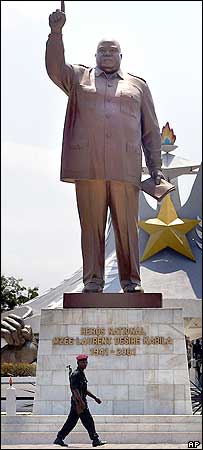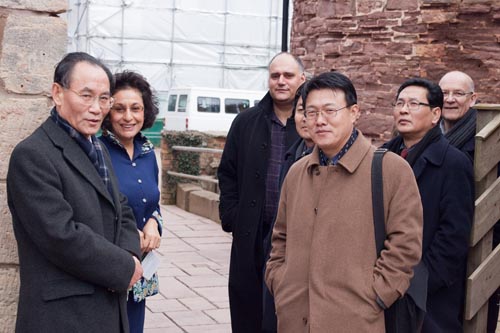According to Bloomberg:
China suspended government exchanges with North Korea after Kim Jong-Il’s regime last week tested a nuclear device and fired short-range missiles, Yonhap News said.
China has halted plans to send officials to North Korea and won’t accept visits from Kim’s government either, the Korean- language news agency said today, citing unidentified diplomatic sources in Beijing.
China’s foreign ministry has said the country “resolutely opposes” North Korea’s nuclear test. China on May 25 agreed with the U.S., Japan and Russia to work toward a United Nations Security Council resolution censuring North Korea. The U.S. and Japan want the statement to call for cutting the communist country’s global financial ties, UN diplomats said.
This is slightly more significant than the “tough talk” Beijing is dishing out to the DPRK in the Chinese press. According to Voice of America:
China’s state-run media these days are running stories bluntly criticizing North Korea.
Tuesday’s English edition of the Global Timesnewspaper quotes Chinese North Korea analyst, Zhang Lianggui, as saying the catastrophe of a mishandled North Korean nuclear test is “an unprecedented threat” to China.
Monday, the paper quoted Tsinghua University professor Sun Zhe as saying North Korea’s nuclear test has apparently spoiled the traditional bonds between the two countries, saying Pyongyang no longer follows Beijing.
And according to Reuters:
The top item on the Chinese website of Beijing’s embassy in Pyongyang is a condemnation of North Korea’s nuclear test.
That, and a recent blast of blunt criticism of North Korea in China’s state-run press, suggest the rancor that officials feel toward their communist neighbor — anger likely to bring Beijing behind a U.N. resolution condemning the May 25 test and threatening fresh sanctions.
North Korea’s second nuclear test took place 85 km (53 miles) from China’s border, and the tremors from the blast forced many schools on the Chinese side to evacuate, wrote Zhang Lianggui, a prominent Chinese expert on the North.
He warned of catastrophe if Pyongyang mishandles a nuclear test.
“Future generations of the Korean people will have no place of their own, and China’s reviving northeast will burst like a bubble,” Zhang wrote in the Global Times, a popular tabloid, on Tuesday.
“This is an unprecedented threat that China has never faced in its thousands of years.”
The web page of the PRC embassy in Pyongyang is here. I do not see any of this language on their page. The top line states “DPRK top leader inspects industrial, farm facilities” and the main story says “Year of China-DPRK friendship aims at enhancing bilateral ties.” Additionally, in the section devoted to Chinese media on the DPRK, the last story was posted on July 4, 2007.
Read the full story here:
China Suspends North Korea Exchanges, Yonhap Reports
Bloomberg
Kyung Bok Cho and Dune Lawrence
5/31/2009
China Withholds Talk Tough Toward North Korea
VOA News
6/2/2009
China anger with North Korea echoes in the press
Reuters
6/2/2009





